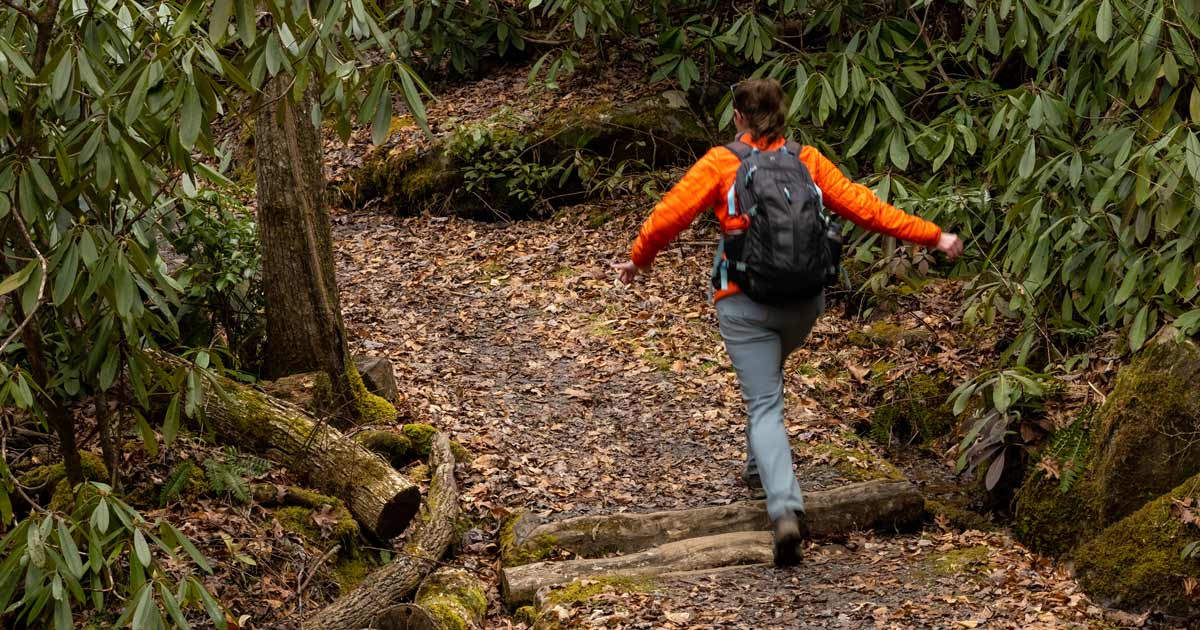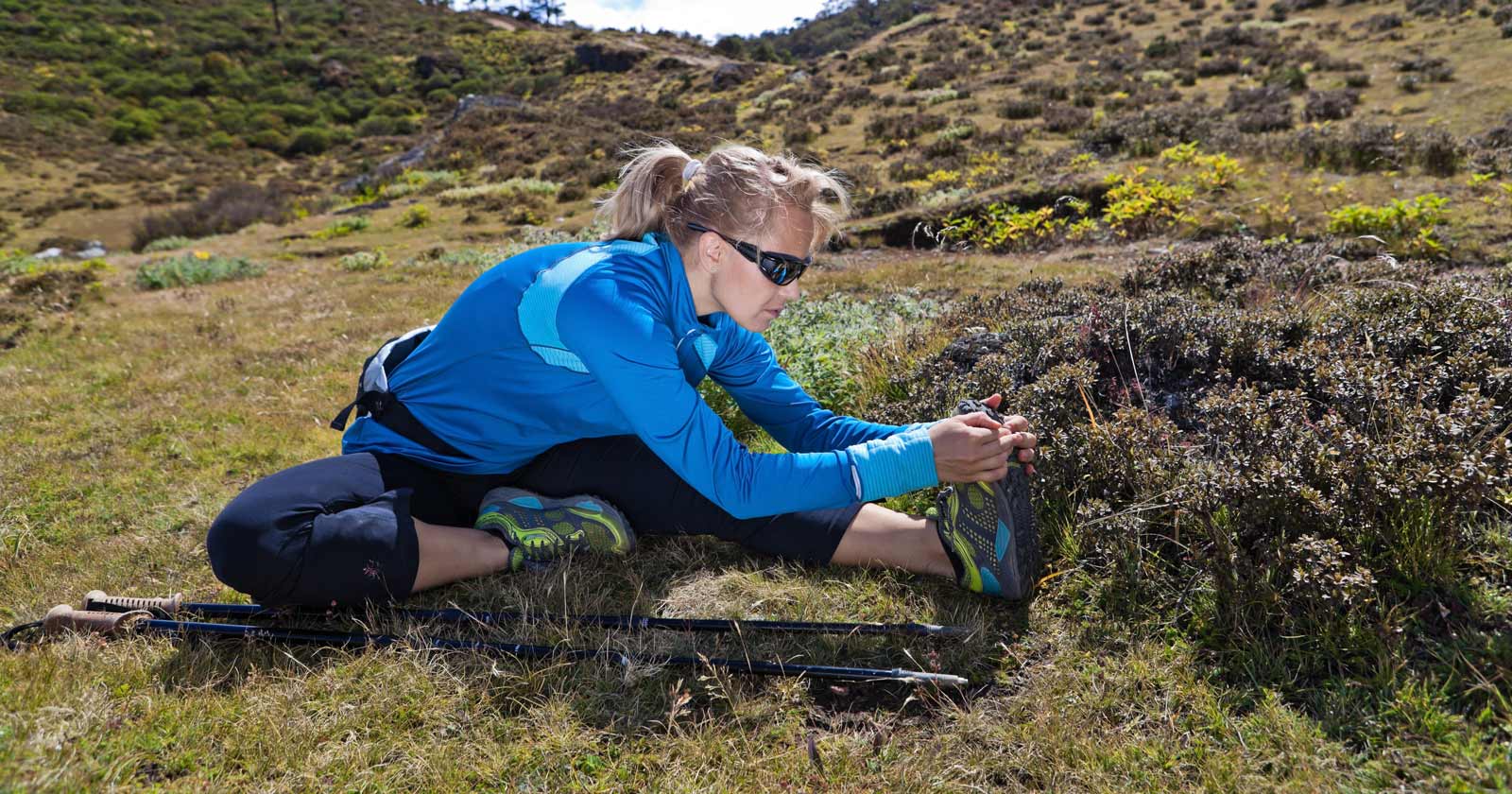Static or dynamic stretching: Which is best?
Hitting the trail with a pack full of gear and a heart full of adventure is exhilarating. But before you start your journey, remember to prepare your body for the challenge. Stretching isn’t just an afterthought, it’s your secret weapon for traversing the trail safely and comfortably. Hiking involves diverse movements, from uphill climbs to downhill descents. However, stretching before, during and after a hike is often something people overlook.
Personally I am not a huge fan of static stretching before a hike as I understand it may actually impair performance by reducing the elastic energy a muscle can store. My concern about static stretching potentially impairing performance aligns with some current perspectives. Many experts now recommend incorporating dynamic stretches as part of a warm-up routine before activities like hiking. Dynamic stretches involve moving the muscles and joints through a full range of motion, helping to increase blood flow, improve flexibility, and activate the muscles without the prolonged hold associated with static stretching.
Dynamic stretching may be more suitable for the pre-hike routine, as it allows the muscles to warm up and prepares the body for the activity ahead. Examples of dynamic stretches include leg swings, arm circles, and lunges.
By incorporating both dynamic and static stretches into your routine, you’ll prime your muscles for these demands, unlocking a range of benefits:
- Reduced risk of injury: Stretching helps increase flexibility and blood flow, making your muscles less prone to strains and tears.
- Improved performance: Warmed-up muscles move more efficiently, allowing you to cover more ground with less effort.
- Enhanced recovery: Post-hike stretches help reduce muscle soreness and stiffness, leaving you feeling refreshed for your next adventure.
Remember, your body is your guide. Listen to its signals throughout the stretching process. Never push to the point of pain, and prioritise gentle, controlled movements. This ensures you prepare your body effectively without risking discomfort or injury. It’s also essential to note that the effectiveness of stretching routines can vary based on individual preferences and needs. Some people may still find static stretches beneficial, especially when done at the end of the hike or as part of a cooldown routine. So, lets’ explore both.

Warm up actively with Dynamic Stretches
Dynamic Stretches: Warming up your muscles the active way
Dynamic stretches are a type of exercise that uses controlled, active movements to prepare your muscles and joints for physical activity. Unlike static stretches where you hold a position for a period of time, dynamic stretches involve continuous movement through a full range of motion. This helps to:
1. Increase blood flow and muscle temperature: Warming up your muscles improves their flexibility and elasticity, making them less prone to injury.
2. Improve coordination and neuromuscular activation: Dynamic stretches help your nervous system “talk” to your muscles more effectively, leading to better coordination and performance.
3. Prepare your body for specific movements: By mimicking movements you’ll be doing in your activity, dynamic stretches can help prime your muscles for optimal performance.
Examples of dynamic stretches
- Arm circles: Forward and backward circles with your arms.
- Leg swings: Swing your legs forward and backward, keeping your knees slightly bent.
- Walking lunges: Step forward with one leg, lowering your body until your front knee forms a 90-degree angle. Push back to the starting position and repeat with the other leg.
- High knees: Run in place while lifting your knees high towards your chest.
- Butt kicks: Run in place while kicking your heels towards your glutes.
- Arm swings: Swing your arms back and forth across your body, mimicking the running motion.
Benefits of dynamic stretches
- Reduced risk of injury: By preparing your muscles for activity, you’re less likely to experience strains, tears, or other injuries.
- Improved performance: Dynamic stretches can help you move more efficiently and effectively during your activity.
- Reduced muscle soreness: They may help to reduce muscle soreness after exercise.
Here’s some things to keep in mind when doing dynamic stretches:
- Start slowly and gradually increase your intensity: Don’t jump into vigorous movements right away.
- Focus on controlled movements: Don’t bounce or jerk your body.
- Don’t stretch to the point of pain: If you feel pain, stop the stretch.
- Perform dynamic stretches specific to your activity: This will help to prepare your muscles for the movements you’ll be doing.
By incorporating dynamic stretches into your warm-up routine, you can help to set yourself up for a safe, enjoyable, and successful workout or hike.

Value of Static Stretches
While dynamic stretches are great for warming up, static stretches have their own benefits, primarily for improving flexibility and reducing muscle soreness post-hike. Offering both options provides a holistic approach to stretching for hikers. Here’s a few examples of static stretches:
Quadriceps stretch
Targets front of the thigh
- Stand tall with your abdominal’s pulled in, chest open, and shoulders pressed down away from your ears. Hold onto a stable surface for balance (tree, car, fence, etc.)
- Hold onto your right foot with your right hand; your knee should be pointing straight down
- Your standing leg remains soft (don’t lock out your knee)
- Hold the stretch for 20-30 seconds; repeat on the opposite leg.
Standing hip stretch
Targets hips and glutes
- Hold onto a stable surface for support.Cross your right ankle over your left knee (as if you are sitting in a chair)
- Push your hips back, keeping your chest open, and your spine straight
- You will feel the stretch through the right side of your hip
- Hold the stretch for 20-30 seconds; repeat on the opposite side.
Inner thigh stretch
Targets the inside of your thigh
- Stand with your feet wider than your shoulders. You can hold onto a stable surface for added support
- Take a mini step forward with your right foot, lean into the right side by pushing your right hip back (your right knee should stay back over your toes)
- Your left leg stays straight; continue to drive down through the left side of your hip to increase the stretch through the left inner thigh
- Hold the stretch for 20-30 seconds; repeat sequence with the left leg forward.
Hamstring stretch
Targets the back of the thigh
- Place your right foot on a higher surface where you can comfortably stretch your hamstrings; your left toes (on your standing leg) should be pointing forward
- As you slowly lean forward and reach for your right foot, only go to the point where you feel the muscle stretch. You don’t want to feel any pain; if your breathing gets shallow, you are probably pushing too far
- Hold the stretch for 20-30 seconds; repeat on the other leg.
Calf stretch
Targets the back of the lower leg
- Stand facing a tree or other stable surface
- Step back with your right foot, pressing your right heel down. Your toes should be pointing forward
- The left knee bends, but position should feel comfortable
- Hold the stretch for 20-30 seconds; repeat on the other leg.
Shoulder rolls
Targets all the muscles of the shoulder
- Stand tall, as if there was a string attached to the top of your head, and someone was pulling up on that string
- Perform slow shoulder circles 10x forward, 10x back
- To increase the range of motion, place hands on shoulders and draw big circles with the elbows each direction 10 times.
- Never push to the point of pain.
Standing chest stretch to back extension
Targets the front of the upper body and spine mobility
- Stand tall with your abdominal’s pulled in and knees soft
- With your palms facing up, open up your arms as much as you can; keep pressing your shoulders down away from your ears.
- Hold position for about 20 seconds
- From arms open, slowly raise arms overhead with your chest lifted; Keep contracting your abdominal’s to protect your lower back and your knees are soft
- Hold this position for about 20 seconds and continue to breath into the extended position.
Static or dynamic stretching?
Research suggests static stretching before exercise might not be optimal so consider incorporating dynamic stretches into your pre-hike routine, focusing on movements that mimic the activity you are about to engage in. Save static stretches for the post-hike cooldown to help with muscle recovery. Always pay attention to your body and adapt your stretching routine based on your personal preferences and how your body responds. Additionally, staying hydrated and starting at a slower pace are good practices for a safe and enjoyable hiking experience.





